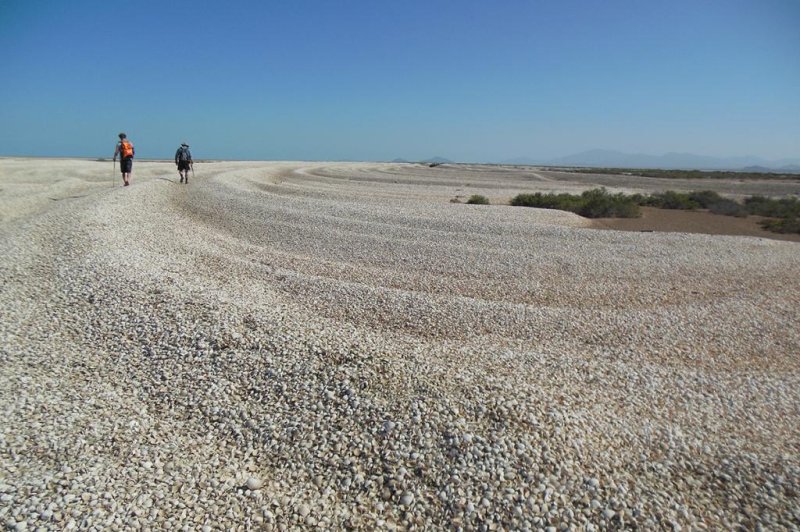The millions of dead clams piled along the terminus of the Colorado River delta are a reminder of the CO2-emitting activities upstream -- activities which have turned the river delta from wetlands into desert. Photo by Jansen Smith/Cornell
TUCSON, Oct. 28 (UPI) -- The terminus the Colorado River, its delta, once supported a great expanse of grassland, marshes and cottonwood stands. Today, the land is mostly dry with few signs of life. It's been dammed to death.
What happens to the carbon stored and transported by a river and its delta as it becomes choked off? A team of researchers from the University of Arizona and Cornell University have been following a trail of dead clams in search of clues.
The Colorado River delta was once rich in clams. Today, their shells litter the dry, brittle ground. They fan out across the landscape like sand dunes. The alluvial clam dunes are called cheniers.
Dead clams store carbon, while living clams emit CO2 as they breathe.
"It would be tempting to say, 'Look at this positive effect,' but it is not positive," Jansen Smith, a doctoral candidate in Earth and atmospheric sciences at Cornell, said in a news release.
The piles of dead clams are a reminder of an abundance that's long gone.
"You used to step on clams with every step you took," Smith said. "Now, you don't."
Though the clam's carbon contribution has gone from a net positive to a net negative -- a daily contributor to a storage vehicle -- the river has been engineered to support much bigger CO2 emitters. The energy it takes to corral and transport water -- and the carbon burned -- far outweigh the clam's carbon emissions.
Gone are carbon-emitting clams, but gone too are carbon-storing marsh grasses and trees.
"The reduced carbon emissions at the delta -- resulting from diverted flow, conveying water to Southwestern cities -- are vastly outweighed by the carbon emissions to divert that flow," added Smith. "We've supplanted a small, natural carbon emitter -- the clam -- with something far more detrimental to the atmosphere."
Smith and his partners detailed their survey of the Colorado River and its dead clams in the journal Royal Society Open Science.















